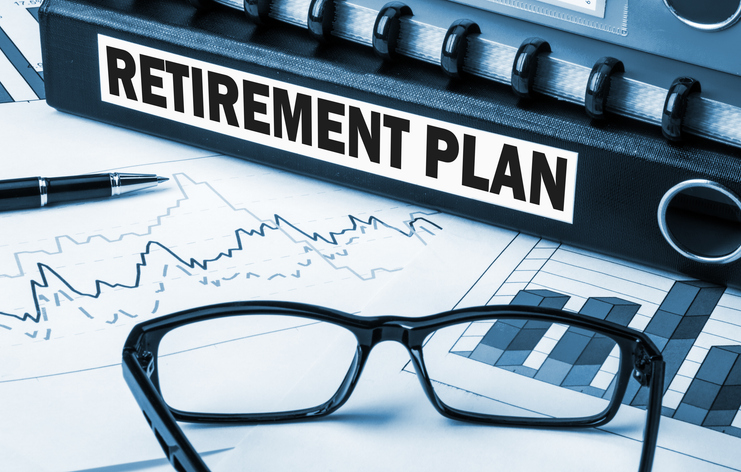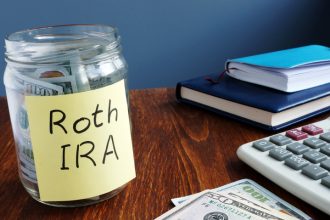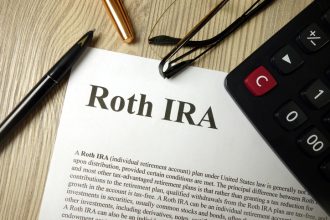A 403(b) plan is common in public schools, nonprofits and religious groups. It is a defined contribution plan where employees add money to a pre-tax or Roth account. The money is usually invested in mutual funds or annuities. Growth depends on contributions, investment performance, fees and time. Some employers may contribute, but matching is not always guaranteed. A traditional pension, on the other hand, is different. It is a defined benefit plan that pays a set monthly income based on years of service and salary. Let’s compare the key differences between both.
A financial advisor can help you determine which plans and products could help meet your retirement goals.
How a 403(b) Plan Works for Retirement
A 403(b) allows eligible employees to save for retirement through payroll deductions. Money goes directly into the account, and investment earnings accumulate on a tax-deferred basis. Withdrawals are taxed as ordinary income, and taking funds out before age 59½ generally triggers a 10% IRS penalty. Some plans also apply vesting rules that determine when employer contributions fully become yours.
When contributing, you can choose between a traditional pre-tax 403(b) or a Roth 403(b). Pre-tax deposits reduce your current taxable income, while Roth deposits are made with after-tax dollars and qualified withdrawals in retirement are tax-free. The IRS sets annual contribution limits that apply to all 401(k) and 403(b) accounts combined.
Employers may enhance savings with matching contributions or flat contributions, sometimes called non-elective contributions. Your own salary deferrals always belong to you immediately, while employer contributions may be subject to a vesting schedule that ties full ownership to years of service.
How a Pension Plan Works for Retirement

A pension is a defined benefit plan that promises a stream of income in retirement, typically for life. Unlike a 401(k), your investment choices don’t affect your payout. It’s based on a formula and funded primarily by your employer, who bears the investment and longevity risk. Most pensions use a formula that multiplies years of service by an accrual rate and your final average salary.
You must become vested to earn a non-forfeitable right to benefits, which usually requires several years of service. If you leave before retiring, you may keep a deferred vested benefit payable at a future date. In some plans you can take a lump sum you can roll over to an IRA to preserve tax deferral. Early retirement is often available but typically reduces the monthly amount.
At retirement, you’ll choose how to receive your benefits. There are typically two choices. You can choose a single-life annuity with the highest monthly amount paid for your lifetime. Or you can choose a joint-and-survivor option that continues payments to a spouse at a lower monthly rate. Some plans offer period-certain guarantees or partial lump sums. Some public plans include cost-of-living adjustments but most private plans do not. This can impact how your income keeps pace with inflation.
Major Differences of a 403(b) Plan and a Pension
Both of these employer-sponsored plans operate very differently in how money goes in, grows and pays out. Here are six major differences:
- Benefit type: A 403(b) is a defined contribution plan, where your balance depends on what you and your employer contribute plus investment returns. A pension is a defined benefit plan that promises a formula-based monthly payment in retirement, typically tied to salary and years of service.
- Who funds it: With a 403(b), employees usually contribute via payroll, and some employers add a match. Employers fund pensions and must contribute enough to meet future benefit obligations.
- Investment control and risk: In a 403(b), you choose from available investments (often annuities or mutual funds) and bear market risk. In a pension, the plan sponsor manages investments and bears the risk of meeting promised benefits.
- Portability and job changes: 403(b) balances are portable—you can generally roll them to another 403(b), 401(k), or IRA when you change jobs. Pension benefits are less portable; they may be deferred until retirement, and vesting rules determine whether you keep any benefit if you leave early.
- Payout and access: 403(b)s allow lump sums or systematic withdrawals in retirement, subject to IRS rules, penalties for early access, and required minimum distributions (RMDs). Pensions typically pay a lifetime annuity; some offer lump sums, and early retirement usually reduces the monthly amount.
- Protections and oversight: The Pension Benefit Guaranty Corporation (PBGC) insures most private-sector pensions. It does not guarantee governmental pensions. The PBGC doesn’t insure 403(b) plans either, but the assets held in custodial accounts or annuity contracts may be protected under ERISA or similar rules.
How to Choose Between a Pension and a 403(b) Plan
Start by deciding what kind of retirement income you want. Some people prefer steady, predictable payments, while others want flexible savings they can adjust over time. Your choice should reflect your time horizon, risk tolerance and household income needs.
Pensions provide guaranteed income for life and sometimes include survivor benefits. The downside is that payouts may be smaller if you leave before full vesting, and cost-of-living adjustments are not always included. A 403(b), by contrast, is portable if you change jobs and can be rolled to an IRA or another employer plan, though your balance will rise and fall with market performance.
To estimate your pension, use the plan’s formula and check the vesting schedule. Ask if it includes automatic cost-of-living increases. For a 403(b), model different contribution levels, employer match possibilities, and return assumptions to see how balances and withdrawals could look. If you are in the public sector and do not pay into Social Security, review how rules like the Windfall Elimination Provision or Government Pension Offset could change your federal benefits.
A 403(b) usually lets you choose between pre-tax contributions, which lower current taxable income, and Roth contributions, which allow tax-free qualified withdrawals later. Some employers offer both options. Pension income is normally taxable when received. Both types of plans can impose penalties for early withdrawals, although 403(b)s may allow distributions without penalty if you separate from service in or after the year you turn 55. Under current law, both pensions and 403(b)s are also subject to required minimum distributions starting at age 73.
If you have access to both, many workers use the pension to secure a guaranteed base of income. At the same time, they contribute enough to the 403(b) to capture any employer match. From there, contributions can be increased as your budget allows.
Bottom Line

Which retirement plan option works better for you will depend on your priorities. A 403(b) offers flexibility and portability, making it useful if you expect career changes. A pension provides reliable income that can serve as a retirement foundation. If you have access to both, it often makes sense to secure the pension benefit first and then use the 403(b) to fill income gaps and protect against inflation.
Retirement Planning Tips
- A financial advisor can help you determine when to retire and manage other factors to maximize your benefits. Finding a financial advisor doesn’t have to be hard. SmartAsset’s free tool matches you with vetted financial advisors who serve your area, and you can have a free introductory call with your advisor matches to decide which one you feel is right for you. If you’re ready to find an advisor who can help you achieve your financial goals, get started now.
- Mandatory distributions from a tax-deferred retirement account can complicate your post-retirement tax planning. Use SmartAsset’s RMD calculator to see how much your required minimum distributions will be.
Photo credit: ©iStock.com/pinkomelet, ©iStock.com/cacaroot, ©iStock.com/dmbaker
Read the full article here














